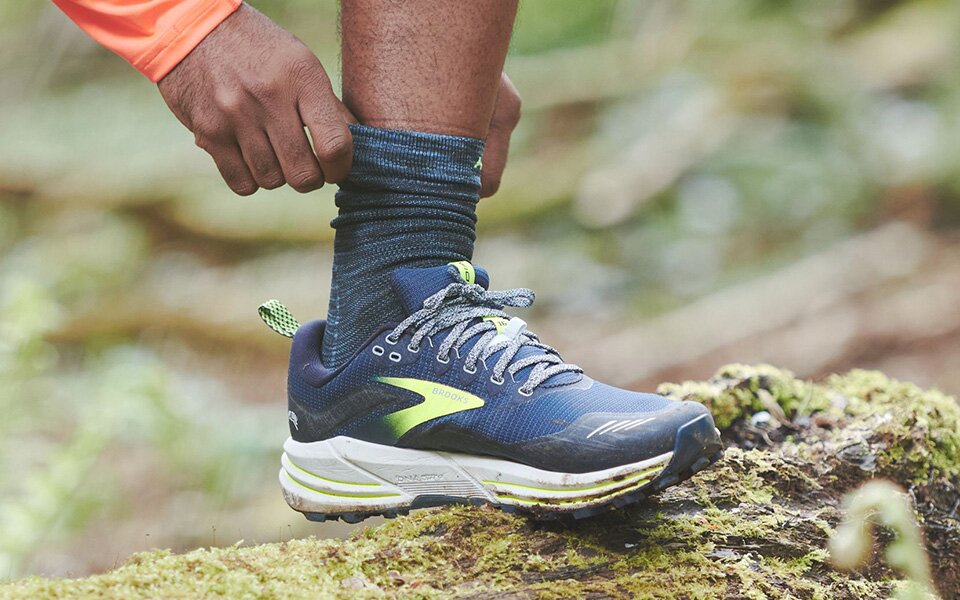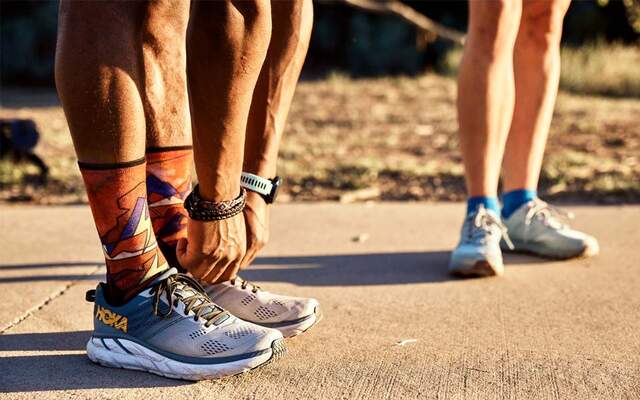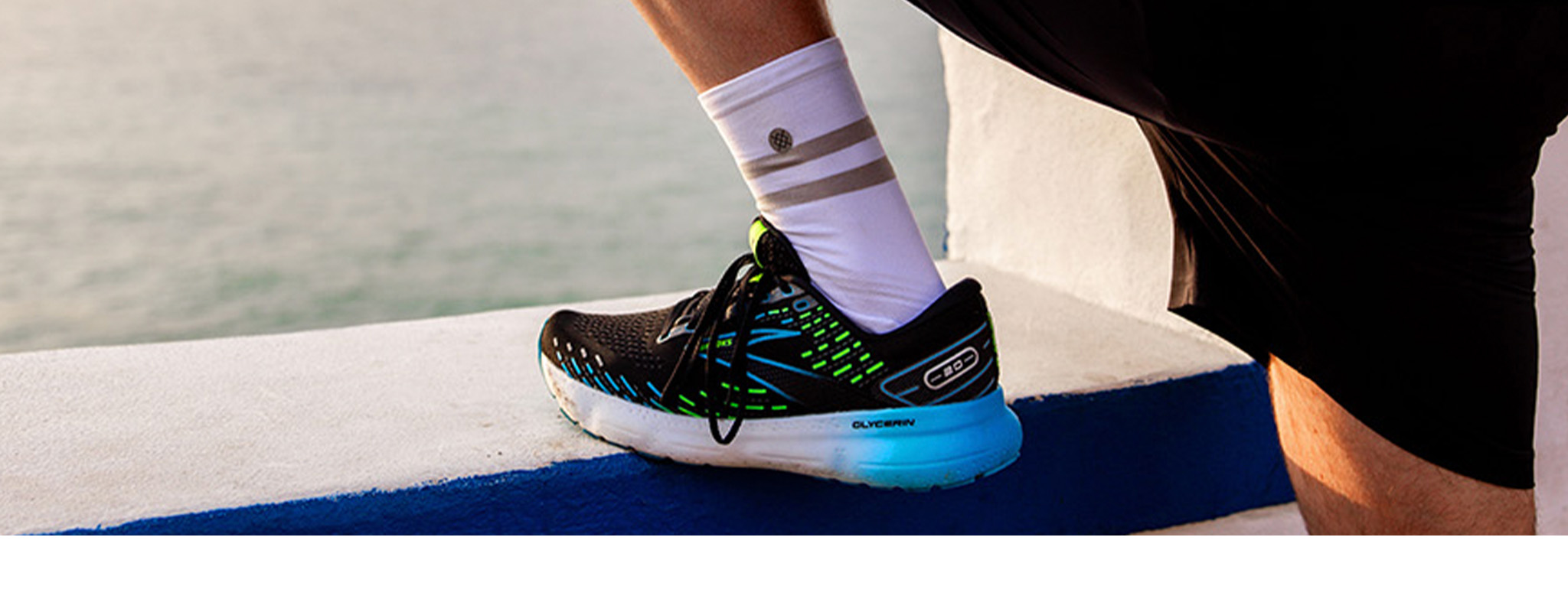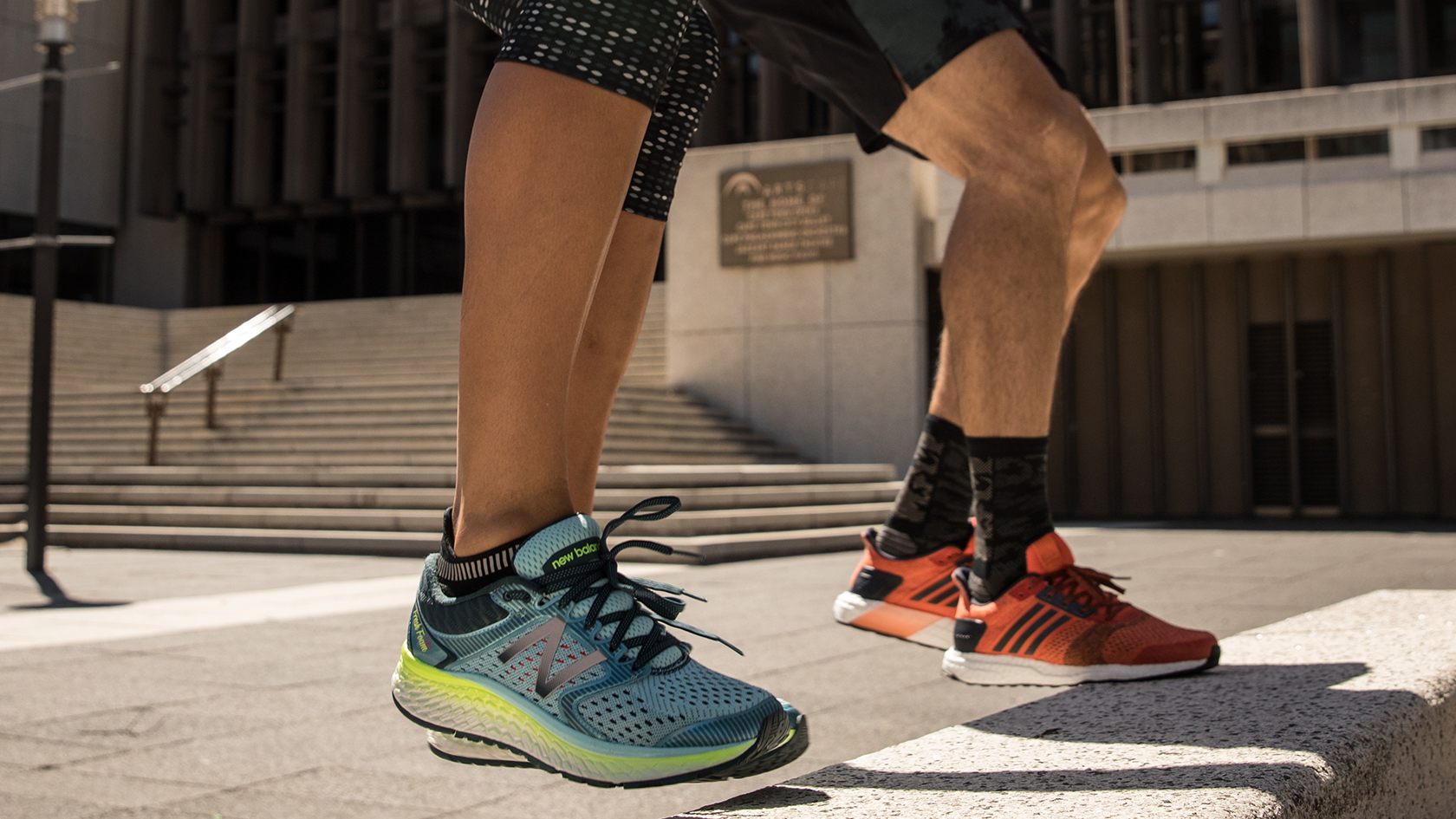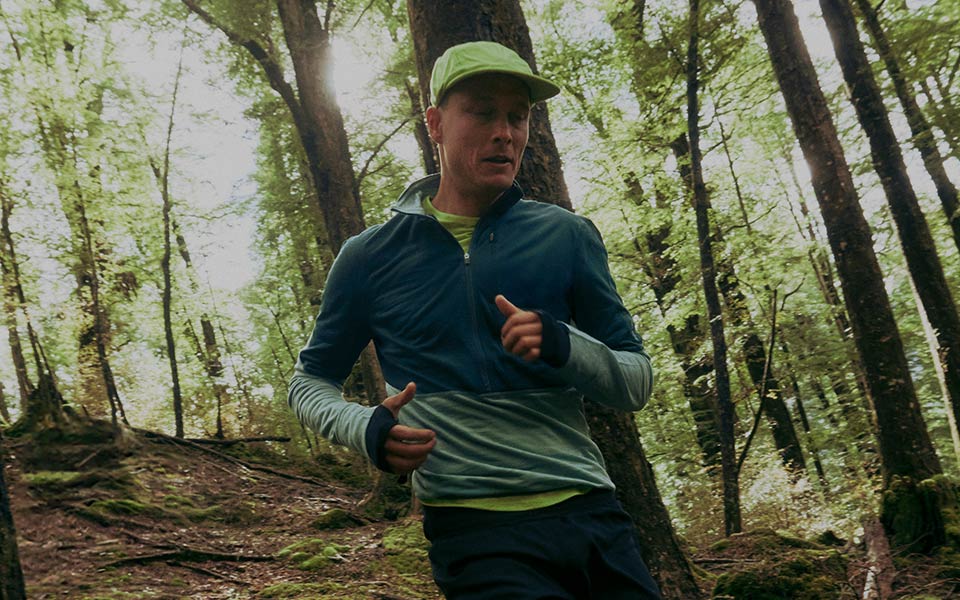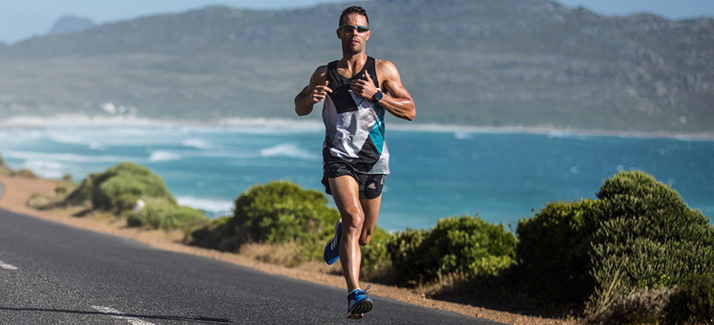The Ultimate Guide To Buying Running Socks
Just like running shoes, not all running socks are the same, and when it comes to finding the perfect pair, a good, technical sock really does make all the difference. At Runners Need, we've put together our guide on buying the ideal running socks for your run - so you can keep your feet cool, dry, comfortable, and blister-free.
Why Are Running Socks Important?
The right pair of running socks can be the vital difference to your performance, comfort, and protection on the roads, trails, and race track. Running socks are designed to increase ventilation, wick away moisture, and protect the most vulnerable spots on your feet from chafing, rubbing, and injury.
However, for many runners, the importance of running socks is overshadowed by the quest to find the perfect pair of running shoes. But without the support of high-quality running socks, problems such as blisters, overheating and discomfort can sometimes persist no matter how good your running shoes are.
Did you know? Runners who switch from cotton to technical socks often report fewer blisters, less foot pain, and a noticeable improvement in comfort, especially on longer runs.
What Makes Running Socks Different from Regular Socks?
The difference is in the detail. Here’s how running socks stand out:
- Advanced Materials → Unlike cotton socks, which absorb and hold moisture, running socks use synthetic blends (like polyester, nylon, and elastane) or merino wool, both of which are quick-drying and moisture-wicking.
- Anatomical Fit → Running socks are shaped specifically for left and right feet, ensuring a glove-like fit that reduces bunching and slippage.
- Seamless Construction →Flat or hand-linked seams prevent rubbing and irritation, especially around the toes.
- Zoned Cushioning → Extra padding in the heel, toe, and underfoot protects high-impact areas without adding bulk.
- Compression Zones → Some socks offer gentle compression to support the arch and ankle, improving circulation and reducing fatigue.
Pro tip → If you’ve ever ended a run with a blister or sore spot, upgrading your socks could be the solution.
What Fabric Socks Should I Buy?
Although for many, cotton socks are a go-to every day, it's best to avoid cotton fabric while running due to its ability to hold moisture and trap it against your skin. Trapped moisture on your feet can cause uncomfortable chafing and blistering in the summer and prevent your feet from warming up during the colder winter months.
We recommend using these technical synthetic fabrics when selecting running socks to help transport the sweat away from your skin:
Merino Wool
Merino wool is a top choice for running socks due to its unique combination of comfort, performance, and sustainability. Exceptionally soft and itch-free, it naturally regulates temperature—keeping feet warm in winter and cool in summer. Merino wool wicks moisture away from the skin, helping to keep feet dry and reduce blisters, while its natural antibacterial properties prevent odour, keeping socks fresher for longer. Lightweight, breathable, and durable, Merino wool socks maintain their fit and shape even after repeated use and washing. As a renewable and biodegradable fibre, Merino wool is also an eco-friendly option, making it ideal for runners who want comfort and performance in every season.
Polyester and Nylon
Polyester and nylon are leading synthetic materials for running socks, valued for their moisture-wicking and quick-drying abilities, which help keep feet cool and dry during runs. Polyester is lightweight and durable, while nylon adds extra strength and abrasion resistance, ensuring socks last longer and maintain their shape. Both fibres are breathable and provide a snug, comfortable fit, making them ideal for high-performance running in various conditions. Most technical running socks blend these materials to maximise comfort, durability, and moisture management for runners of all levels. Shop brands like Balega and Feetures for exceptional synthetic running socks for road, trail, and track running.
LYCRA®
LYCRA® is a highly flexible spandex fibre commonly used in running socks to deliver superior stretch, shape retention, and multi-directional movement. Its elasticity ensures that socks stay securely in place during runs, providing a snug fit that supports the arch and ankle, reduces slippage, and helps alleviate fatigue. LYCRA® also enhances comfort by gripping the foot and ankle, which adds stability and prevents bunching, even during long-distance or high-intensity sessions. Additionally, LYCRA® fibres are durable and maintain their performance through repeated wear and washing, making them a reliable component in technical running socks. This material is often blended with polyester and nylon to combine flexibility, moisture management, and long-lasting support—ideal for runners seeking both comfort and performance.
Types of Running Socks: Which Style Is Right for You?
Running socks come in a variety of heights and styles. Here’s a quick guide:
| Type | Best For | Features |
|---|---|---|
| No-show/Invisible | Road running, summer, minimal look | Low cut, hidden in most shoes, may have heel tabs |
| Ankle/Crew | Everyday running, trail, cooler weather | Covers ankle, prevents debris entry, more protection |
| Quarter/Calf/Compression | Trail, long-distance, recovery, cold weather | Higher cut, supports calves, improves circulation |
| Toe Socks | Blister prevention, toe splay | Individual toe pockets, reduces skin-on-skin friction |
| Waterproof | Wet conditions, winter, trail | Keeps feet dry in rain or puddles |
| Anti-blister/Double-layer | Long runs, sensitive feet | Two layers reduce friction, extra padding |
No-show socks are great for a minimalist look, while crew and quarter socks offer more protection from debris and are popular for trail running. Compression socks can help with recovery and circulation, especially on longer runs or for those prone to swelling.
How Should Running Socks Fit?
A proper fit is essential for running socks to perform their best and keep your feet comfortable mile after mile. Running socks should feel snug and secure, gently hugging your foot without being overly tight or restrictive. The heel cup of the sock should align perfectly with your own heel—there shouldn’t be any excess fabric bunching up at the back or slipping under your foot, as this can cause friction and lead to blisters. Look for socks that are anatomically designed, often labeled as left/right specific, which provide a more tailored fit and help prevent movement inside your shoe. The toe area should offer enough space for your toes to splay naturally, but not so much that the fabric wrinkles or folds. If you feel any pressure points, pinching, or loose areas, try a different size or brand, as even small fit issues can become major discomforts on longer runs. Ultimately, a well-fitted running sock will stay in place, support your foot’s natural shape, and allow you to focus on your run, not your feet
Cushioning vs. Thin: Which Is Better?
The choice between cushioned and thin running socks depends on your running style, preferences, and the conditions you face.
Cushioned socks provide extra padding in key areas like the heel, toe, and underfoot, which can help absorb impact and reduce foot fatigue, especially on long runs or rough terrain. They’re a great option for runners who experience sore feet, are prone to blisters, or want more comfort on harder surfaces.
On the other hand, thin or minimalist socks offer a lightweight, barely-there feel that allows for maximum breathability and a closer connection to the ground. These are ideal for hot weather, speedwork, or runners who prefer a more responsive ride and less bulk inside their shoes. Many runners keep both types in their kit, switching between cushioned and thin socks based on the day’s distance, weather, or personal comfort needs.
Compression Running Socks: Are They Worth It?
Compression running socks have gained popularity for their ability to support muscles and improve circulation during and after runs. These socks apply gentle, graduated pressure to the foot and lower leg, which can help reduce muscle vibration, limit swelling, and speed up recovery by promoting better blood flow. Many runners find that compression socks help reduce fatigue during long distances, support tired calves, and even alleviate symptoms of conditions like shin splints or plantar fasciitis. They’re especially valued by marathoners, ultra-distance runners, and those recovering from injury or heavy training blocks. Some runners also wear compression socks during travel or after races to aid recovery and reduce swelling. While the scientific evidence on performance gains is mixed, the comfort and support offered by compression socks make them a worthwhile addition to many runners’ gear collections, especially if you’re looking for extra support or faster recovery.
Key Feet-ures
Seamless running rocks are created to give you maximum comfort, helping eliminate the risk of unnecessary chafing, especially around the toes.
Compression running socks gently compress your muscles to improve blood circulation, reduce tiredness, and boost recovery time to keep you running further, for longer. Compression running socks range from knee length to cover calves to shorter, ankle length, for just your feet.
Trail running socks are durable, comfortable, and warm to keep up with the rigours of mud and water. Often temperature-regulating and moisture-wicking, trail running socks are often made from Merino Wool or synthetic materials.
Odour-resistant running socks are often made from naturally anti-microbial Merino Wool. They're ideal for long-distance and marathons, helping keep your feet cool, dry, and, most importantly, odour-free.
Blistering can be a runner’s worst nightmare. Some technical running socks reduce friction using a two-layer system as the two layers move against each other, rather than against your skin. However, these can be less ventilating and breathable than other running socks.
Elasticated materials such as LYCRA® grip the ankle, providing extra support and stability for a comfortable run.
Elasticated materials such as LYCRA® keep the sock in place while running to support the arch of your foot, give stability, and alleviate fatigue.
Quick-drying running socks wick away unnecessary moisture while drying in a flash. They're ideal for long-distance and marathon running.
The thickness of running socks depends on personal preference, as thicker socks can be more comfortable and warm, but can affect the responsiveness of running shoes more than thinner variants.
If you want a bit of added protection without the loss of response, look out for extra padding across the toes, heel, and ball of the foot on running socks to minimize shock and protect high-impact areas.
FAQs
Consider the type of running you’ll be doing, the weather conditions, and your personal comfort preferences. Look for moisture-wicking materials, a snug fit, and features like cushioning and arch support.
If you’re between sizes, size up for wide feet and down for narrow feet. A snug fit is essential to prevent blisters and ensure comfort.
It depends on the conditions. Thin socks are great for breathability and hot weather, while thick socks offer more cushioning and are better for cold weather or long runs.
Some pro runners prefer going sockless to reduce friction and achieve a more natural fit. However, this is not recommended for most runners as it increases the risk of blisters.
Synthetic blends (polyester, nylon, elastane) and merino wool are the top choices for their moisture-wicking, quick-drying, and breathable properties. Avoid cotton at all costs.
Compression socks can help with circulation, reduce muscle fatigue, and speed up recovery, especially for long-distance runners or those prone to swelling.
It depends on your preference and running conditions. Cushioned socks are better for long runs and trails; thin socks are ideal for hot weather and speedwork.
Choose mid-ankle or crew socks with snug cuffs and heel tabs. Avoid ultra-low trainer socks that are prone to slipping.
Toe socks can help prevent blisters between the toes and promote natural toe splay. They’re especially popular with trail runners and those prone to toe blisters.
It’s a good idea to have at least 3–5 pairs, so you always have a clean, dry pair ready for your next run.
FAQs


